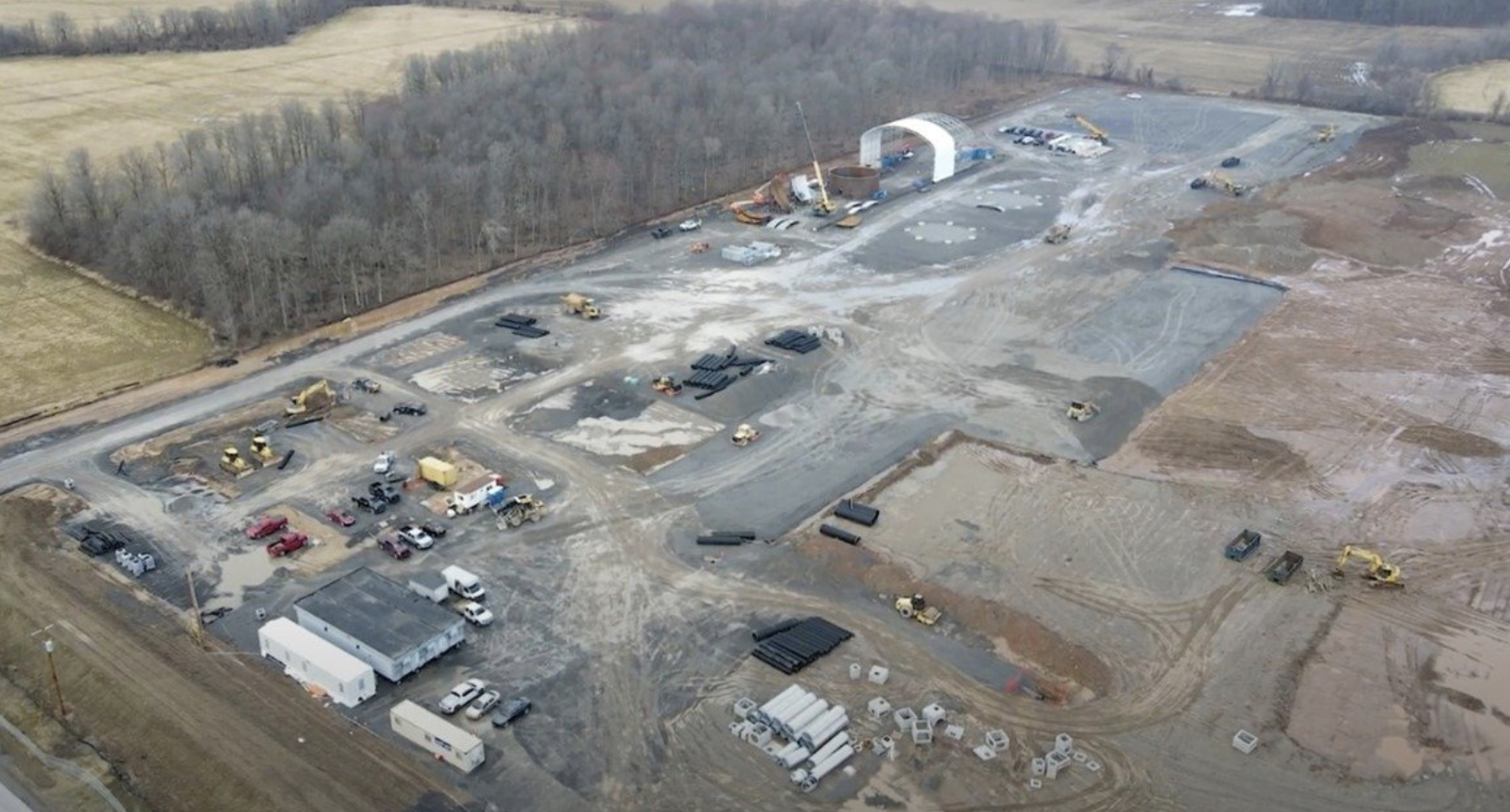
- Details
- By Native News Online Staff
The Tonawanda Seneca Nation and the Sierra Club filed a lawsuit today in New York State Supreme Court, challenging two resolutions approved by the Genesee County Economic Development Center (GCEDC) related to the proposed construction of a large-scale data center at the Western New York Science and Technology Advanced Manufacturing Park (STAMP) in Alabama, NY.
The petition alleges that GCEDC violated both procedural and substantive provisions of the State Environmental Quality Review Act (SEQRA) by awarding $472 million in subsidies to Stream U.S. Data Centers without conducting a full environmental review or requiring detailed project plans or site approval. The lawsuit names GCEDC, Stream U.S. Data Centers LLC, and the Town of Alabama as defendants.
The proposed data center site is located within 300 feet of the nearest residence and approximately half a mile from the Tonawanda Seneca Nation’s Reservation Territory, which has consistently opposed placing the data center at the STAMP location.
The Tonawanda Seneca Nation, a federally recognized tribe, is locatee about one mile from the proposed site of the data center.
“Our reservation Territory is protected by federal treaty and it is our duty to protect our Territory – the land, plants, animals, waters – for future generations… The Territory and its natural resources is all that the Nation’s citizens have – if the Territory is damaged, we will have no place to go," Tonawanda Seneca Nation Chief Kenith Dale Jonathan said.
The petition argues that the Genesee County Economic Development Center (GCEDC) failed to meet critical legal requirements under New York’s State Environmental Quality Review Act (SEQRA). Specifically, GCEDC conducted its environmental review based on general concepts rather than concrete plans, in violation of SEQRA mandates. The agency also failed to coordinate its review with the Town of Alabama’s site plan process, despite being obligated to do so under the Final Generic Environmental Impact Statement (FGEIS) it previously issued for the STAMP site. In addition, the petition identifies multiple errors in GCEDC’s review and claims the agency did not conduct the thorough environmental analysis required by law.
The lawsuit seeks to invalidate GCEDC’s approvals and compel a new, legally compliant environmental review under SEQRA.
The Tonawanda Seneca Nation and the Sierra Club have also filed for a Temporary Restraining Order to halt any further action by GCEDC or other parties that would advance the proposed data center project. Currently, Stream U.S. Data Centers has not finalized a purchase and sale agreement for the land, and the Town of Alabama Planning Board has yet to conduct its required site plan review.
If built, the Stream data center would span approximately 900,000 square feet—the equivalent of 15 football fields. It would require 250 megawatts of electricity annually, burn 60,000 gallons of diesel fuel per year, and consume 10,000 gallons of water each day. The project would be heavily subsidized by taxpayers, with public support totaling $472 million—amounting to $3.9 million per job created.
The Tonawanda Seneca Nation, a member of the Haudenosaunee Confederacy, has opposed the STAMP mega industrial site since its inception. The Nation views the project as an existential threat to its people, culture, and the Big Woods—an ecologically rich area adjacent to the project site that is home to birds, fish, deer, medicinal plants, and other vital resources.
In a sworn affidavit, Chief Jonathan of the Tonawanda Seneca Nation expressed grave concern about the impacts the data center would have on the Nation’s way of life:
“The construction and operation of the Project will diminish the Big Woods as a pristine hunting ground and forever change the character of the area with the additional noise, lights, pollution, and surrounding human development… Any spill or pollution event at the Project site that results in contamination to either ground or surface waters threatens the drinking water resources for the Nation and its Citizens.”
The 1,263-acre STAMP site lies in a rural, agricultural region surrounded by publicly protected lands that attract thousands of visitors annually. The area is known for its wetlands and forests that provide critical habitat for a wide range of wildlife, including threatened and endangered species such as the Short-eared Owl.
The Sierra Club has joined the Tonawanda Seneca Nation in opposing GCEDC’s effort to transform this ecologically sensitive landscape into an industrial mega-site. The global data center industry is widely recognized for its high levels of noise, pollution, excessive water usage, and massive energy consumption. Redirecting 250 megawatts of renewable power to the data center would undermine New York’s climate goals, while contributing significant greenhouse gas emissions and air pollution. This landscape, rich in biodiversity, should be protected and restored under New York’s 30x30 Initiative—not sacrificed for environmentally harmful industrial development.
Despite nearly two decades of effort and over $410 million in public subsidies, GCEDC has struggled to attract advanced manufacturing tenants or complete basic infrastructure at the rural STAMP site. As of now, only Edwards Vacuum is actively building at the location. Construction of Plug Power’s green hydrogen facility was paused in 2023, creating a funding gap for the site’s electrical substation. Stream U.S. Data Centers has pledged $50 million to help fill that gap as part of its proposed project.
According to the petition,
“To fast track the development of a data center and jump start the stalled STAMP Site, the GCEDC resorted to taking shortcuts around the very environmental review standards and procedures” established under SEQRA.
More Stories Like This
Trump signs law that revokes some limits on drilling in Alaska’s National Petroleum ReserveSouthern Sierra Miwuk Nation Gets 900-Acres ofLand Back
Chilkat Indian Village Tells New Palmer Mine Owners They Are “Not Welcome” in Chilkat Valley
Tribes, Coastal Group Ask Army Corps to Revoke Permit for Texas Export Terminal
Michigan Tribes Tell Supreme Court: Don’t Bail Out Enbridge
Help us defend tribal sovereignty.
At Native News Online, our mission is rooted in telling the stories that strengthen sovereignty and uplift Indigenous voices — not just at year’s end, but every single day.
Because of your generosity last year, we were able to keep our reporters on the ground in tribal communities, at national gatherings and in the halls of Congress — covering the issues that matter most to Indian Country: sovereignty, culture, education, health and economic opportunity.
That support sustained us through a tough year in 2025. Now, as we look to the year ahead, we need your help right now to ensure warrior journalism remains strong — reporting that defends tribal sovereignty, amplifies Native truth, and holds power accountable.
 The stakes couldn't be higher. Your support keeps Native voices heard, Native stories told and Native sovereignty defended.
The stakes couldn't be higher. Your support keeps Native voices heard, Native stories told and Native sovereignty defended.
Stand with Warrior Journalism today.
Levi Rickert (Potawatomi), Editor & Publisher


